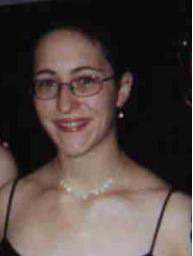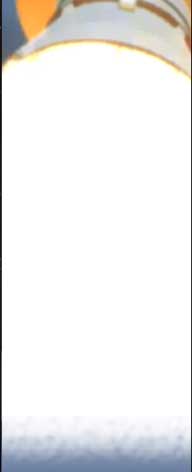|
 This summer, I had the pleasure of working at NASA’s Marshall Space Flight Center (MSFC) in the Microwave/Millimeter Wave (MMW) Non-Destructive Evaluation (NDE) Lab with my mentor, Frank Hepburn.
Microwaves are able to penetrate dielectrics. This property makes MMW NDE ideal for determining the dielectric properties of a sample as well as detecting indications within dielectrics or surface indications on metal samples. MMW NDE is just one of many different NDE methods, but is unique in that unlike most current NDE methods, it excels at evaluating dielectric materials, such as composites, ceramics, plastics, and foam. Detecting such flaws prevent failures that could result in lost time, equipment damage, injury or even loss of life. MMW NDE is proving to be effective at detecting small air pockets, delaminations, and disbonds in dielectrics and composites and surface cracks and flaws in metals covered by a dielectric material such as paint, rubber or rust. Microwave/Millimeter Wave Non-Destructive Evaluation is quickly proving its versatility by providing clear 2D and 3D images without many of the problems generated by other NDE methods such as the inability to detect sub-surface flaws, required contact with the sample, and hazards to operator.
During my stay, the MMW NDE laboratory at NASA worked primarily with Spray-On Foam Insulation (SOFI) samples. One of the biggest achievements of the summer was mounting and preparing working code for a 150 GHz lens. This included finding the focal length of the lens and writing code that would position the lens automatically. At the end of the summer, the 150 GHz lens provided clear images of known flaws within SOFI samples.
This summer, I had the pleasure of working at NASA’s Marshall Space Flight Center (MSFC) in the Microwave/Millimeter Wave (MMW) Non-Destructive Evaluation (NDE) Lab with my mentor, Frank Hepburn.
Microwaves are able to penetrate dielectrics. This property makes MMW NDE ideal for determining the dielectric properties of a sample as well as detecting indications within dielectrics or surface indications on metal samples. MMW NDE is just one of many different NDE methods, but is unique in that unlike most current NDE methods, it excels at evaluating dielectric materials, such as composites, ceramics, plastics, and foam. Detecting such flaws prevent failures that could result in lost time, equipment damage, injury or even loss of life. MMW NDE is proving to be effective at detecting small air pockets, delaminations, and disbonds in dielectrics and composites and surface cracks and flaws in metals covered by a dielectric material such as paint, rubber or rust. Microwave/Millimeter Wave Non-Destructive Evaluation is quickly proving its versatility by providing clear 2D and 3D images without many of the problems generated by other NDE methods such as the inability to detect sub-surface flaws, required contact with the sample, and hazards to operator.
During my stay, the MMW NDE laboratory at NASA worked primarily with Spray-On Foam Insulation (SOFI) samples. One of the biggest achievements of the summer was mounting and preparing working code for a 150 GHz lens. This included finding the focal length of the lens and writing code that would position the lens automatically. At the end of the summer, the 150 GHz lens provided clear images of known flaws within SOFI samples.
~MELODY REA, UNIVERSITY OF MISSOURI –ROLLA
|







